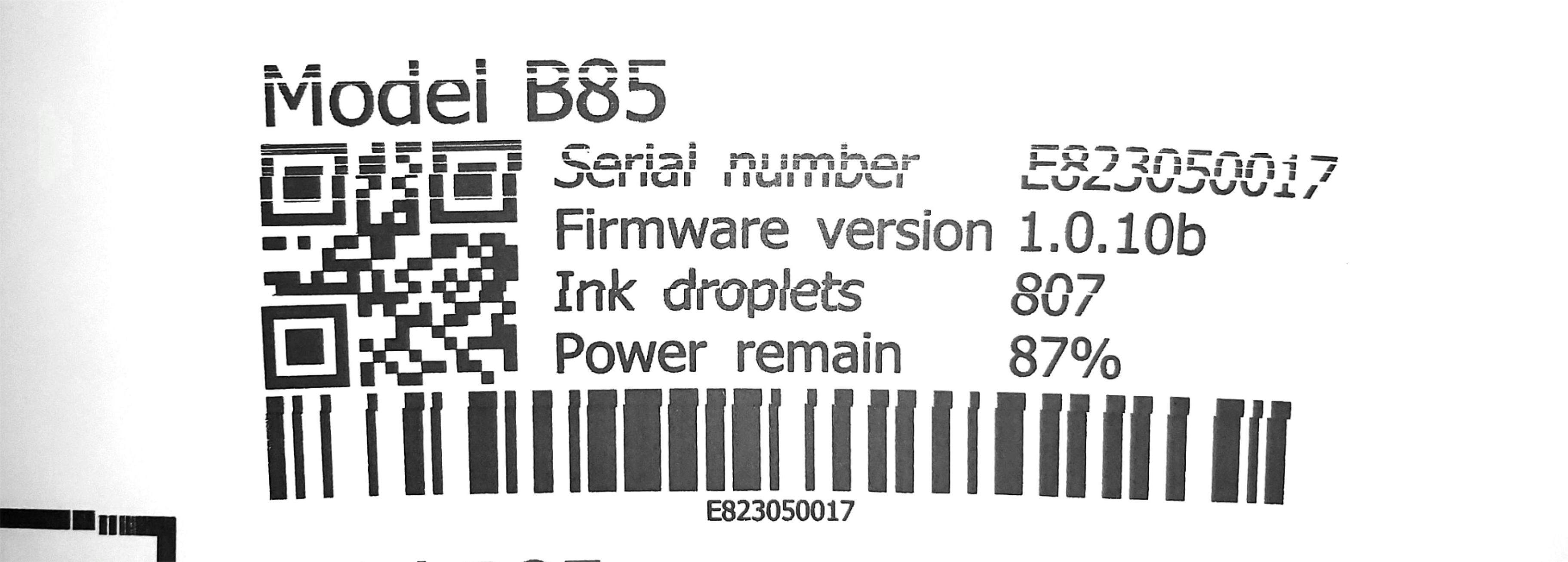Is Your Handheld Printer Printing Poorly? Here's How to Resolve It
Handheld inkjet printers are effective tools for labeling and printing directly on items while on-the-go. However, users often face challenges with print quality, especially when they do not have good usage habits. This guide offers detailed approaches to identify print issues and targeted strategies to enhance the printing performance of your handheld printer.

Detailed Approach to Diagnose Print Quality Issues
When facing print quality issues with handheld inkjet printers, the first step towards resolution is a thorough diagnosis. Identifying the exact nature of the problem is crucial, as various factors can contribute to less-than-ideal print outcomes. Common issues include blurred or smeared prints, missing colors, streaks across the print, and prints that fade too quickly or appear lighter than expected. Each of these symptoms can indicate specific problems, such as low ink levels, clogged nozzles, incorrect ink type for the material, or environmental factors affecting the ink's performance.
To accurately diagnose print quality issues in handheld inkjet printers, a systematic examination of potential problem areas is essential. Here's a step-by-step guide to help identify common printing problems:
- Check the Printer's Ink Levels: Ensure there's sufficient ink. Low levels can lead to faded or inconsistent prints.
- Inspect the Nozzles: Look for clogs that might block ink ejection. A clogged nozzle can result in missing colors or streaks.
- Evaluate Ink Type: Confirm the ink is suitable for the substrate. Incorrect ink types can cause smudging or poor adhesion.
- Examine the Print Surface: Make sure it's clean and compatible. Dirt or the wrong surface type can degrade print quality.
- Review Print Settings: Incorrect settings may lead to poor outcomes. Ensure settings match the printing task.
- Assess the Printing Environment: Temperature and humidity can impact ink behavior. Extreme conditions might affect print quality.
Identifying the specific cause is critical to applying the correct solution, whether it's a simple maintenance task or adjusting the print environment. By following these diagnostic steps, you can effectively troubleshoot and enhance the print quality of your handheld printer.
Refer to the video if your Bentsai handheld inkjet printer is printing poorly.
Proven Strategies for Improving Print Quality
1. Ink and Cartridge Management
- Checking Ink Levels: Low ink levels in a portable inkjet printing device can lead to poor print quality. Ensure your ink cartridges are adequately filled.
- Ink Type Suitability: Different surfaces require different inks. Solvent-based inks are preferable for non-porous surfaces, while water-based inks suit porous surfaces. Using the wrong ink type can result in smudging or poor adhesion.
2. Nozzle Care and Maintenance
- Regular Cleaning: Nozzle blockages are a frequent cause of poor print quality in handheld inkjet printers. Follow your device's manual for proper nozzle cleaning procedures.
- Deep Cleaning: In cases of persistent clogging, a more thorough cleaning with a specialized solution may be necessary.
3. Battery and Power Considerations
Low battery levels in a handheld printing device can affect print quality. Always ensure your device is fully charged or adequately powered.
4. Environmental Factors
External conditions like humidity and temperature can impact the ink's behavior. Printing in an environment with controlled temperature and humidity can significantly improve print quality.
5. Print Surface Assessment
The texture and material of the printing surface play a crucial role. Ensure the surface is clean, dry, and suitable for the type of ink your handheld printer uses.
6. Firmware and Software Updates
Keeping your handheld coding machine's firmware and software up to date can resolve many print quality issues.
7. Device Handling and Technique
The way you handle the printer while printing can affect the outcome. A steady, consistent movement is crucial for even ink distribution.

When to Seek Professional Assistance?
If the above steps do not resolve the issue, it may be time to seek professional help. Manufacturer support can provide more specific guidance based on your device model. When contacting the manufacturer of your portable inkjet printer, it is recommended to attach images of the print result for them to diagnose the problem and offer the best solution for you.
Conclusion: Simple Steps Can Often Solve Big Problems
When experiencing printing issues with your handheld printer, it's important not to panic. Many times, the solution is simpler than it seems. By running through some basic troubleshooting steps—like checking ink levels, ensuring proper handling, and performing regular maintenance—you can often resolve the issue without needing to replace the ink cartridge or the entire printer. These small steps can make a significant difference in the performance and longevity of your portable printing device.
However, if the problem persists despite your best efforts, remember that consulting the manufacturer is always the best way to go. Their expertise and specific guidance for your model can provide the most effective solutions and, if necessary, professional repair services. Your handheld printer is an invaluable tool, and with the right care and support, it can continue to serve your printing needs efficiently.
More Guides and Tips to Fix Common Printer Issues
Ask Question
No questions and answers

